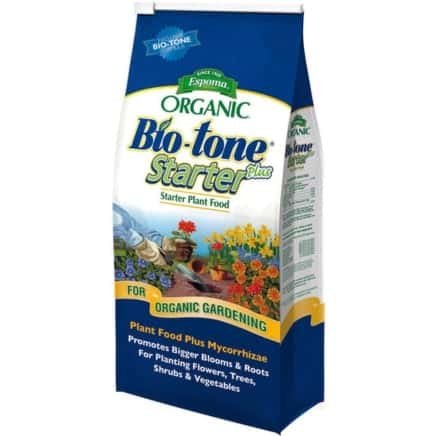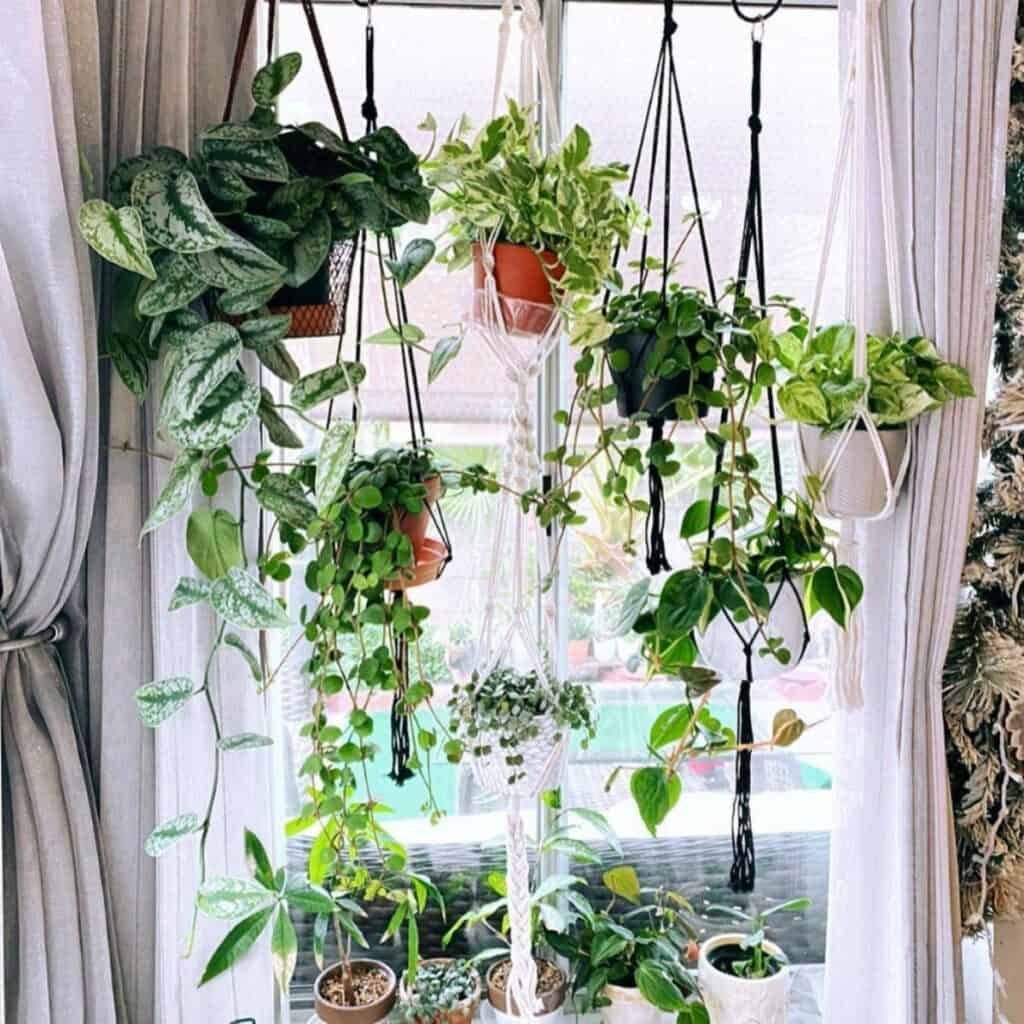Wildflowers come in all shapes and sizes. Their bright colors create a rainbow of hues throughout the growing season. Not only do flowers beautify your landscape, but a variety of wildlife, including birds, bees, and butterflies, all benefit from wildflowers and use them as a food source.
When your spring and summer flowers have stopped blooming, you may be wondering how you can fill in the gaps. Fortunately, there are many late summer and fall-blooming plants to help your garden look great until the first frost. Blue mistflower is a reliable late-season bloomer with spectacular pale purplish-blue flowers that are sure to enchant.
Blue mistflower (Conoclinium coelestinum) is a member of the sunflower family. This perennial wildflower comes back year after year with its showy, pollinator-friendly display. Don’t confuse it with the annual floss flower (Ageratum) commonly sold by garden centers as bedding plants. While they look very similar, these are two completely different species.
Do you have a spacious rain garden, live near a wetland edge, or even experience occasional flooding? If so, you know it can be challenging to find plants that love wet environments. Luckily, blue mistflower is easy to grow, especially in a moist part of your landscape, where there is plenty of space to form an attractive colony.
Now, let’s dig right in and learn all about the blue mistflower and what it needs to thrive.
Blue Mistflower Overview
|
|
|
Plant Natural History
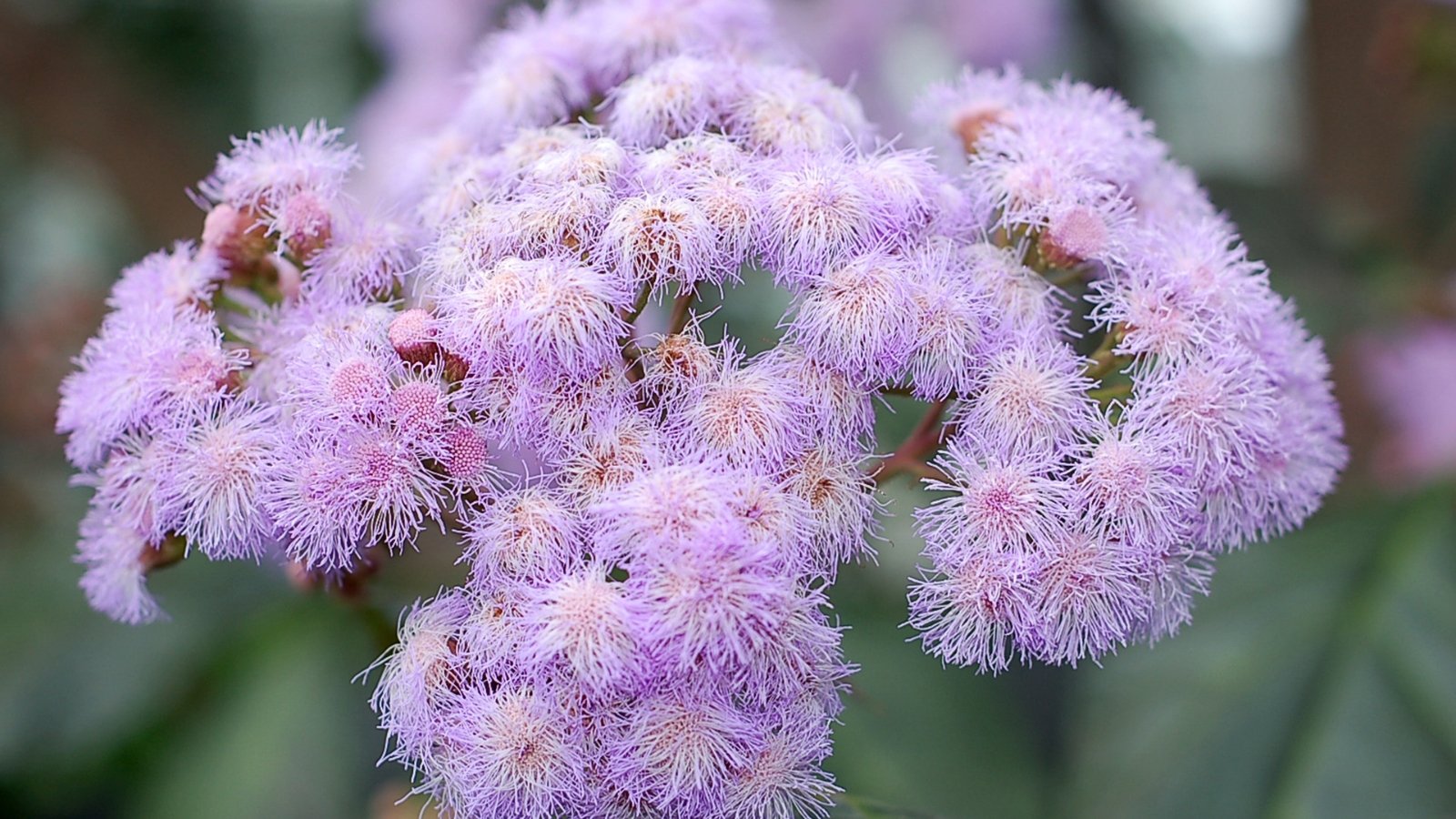
The blue mistflower is a member of the sunflower family (Asteraceae). It is native to the central and eastern United States, with the exception of New England. This wildflower inhabits meadows and grasslands, floodplains, streamsides, and roadside ditches. It is primarily adapted to moist soils and in favorable conditions, where it forms weedy stands and competes with less aggressive vegetation.
There are just a few other Conoclinium species native to North America, and these have very limited ranges in the far southwestern United States. You’ll find these more heat-loving species primarily in the desert southwest and into Central America.
Characteristics
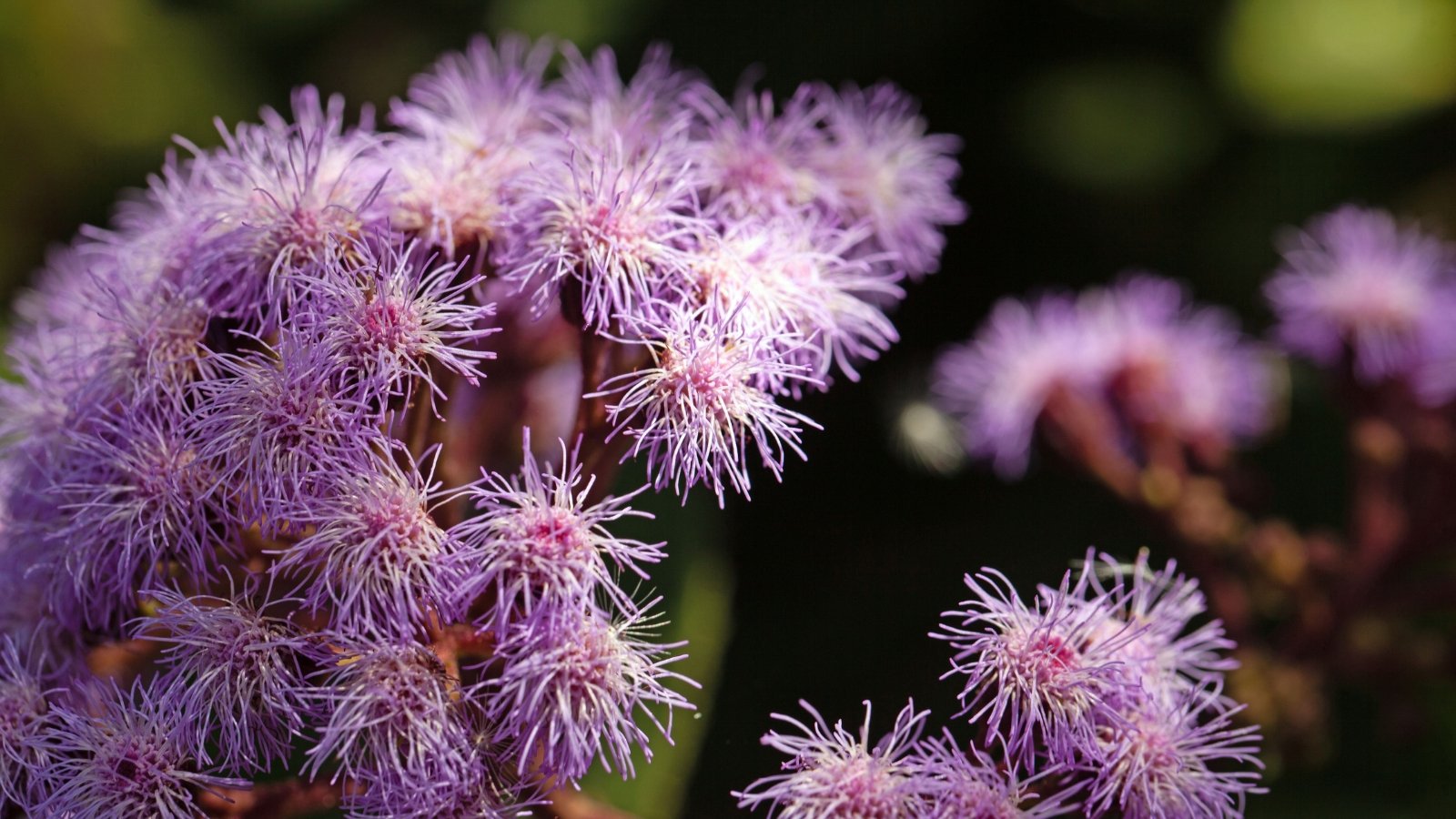
Blue mistflower is a medium-sized herbaceous perennial. It develops several vertical stems and grows to three feet tall. Each stem is lined with opposite, bright green leaves with serrated edges. The leaves have a slightly crinkly texture, allowing you to easily distinguish them from other leafy vegetation before they begin flowering.
Most people grow blue mistflower for their beautiful, pale bluish-purple flowers. The broadly rounded clusters of flowers bloom in late summer and early fall. Each flower appears as a fluffy mass, and all together, these showy blooms have a soft and fuzzy appearance.
In favorable conditions, these plants spread quickly by both rhizomes and self-seeding. Solid boundaries, deep shade, and drier soil will limit their spread.
Propagation
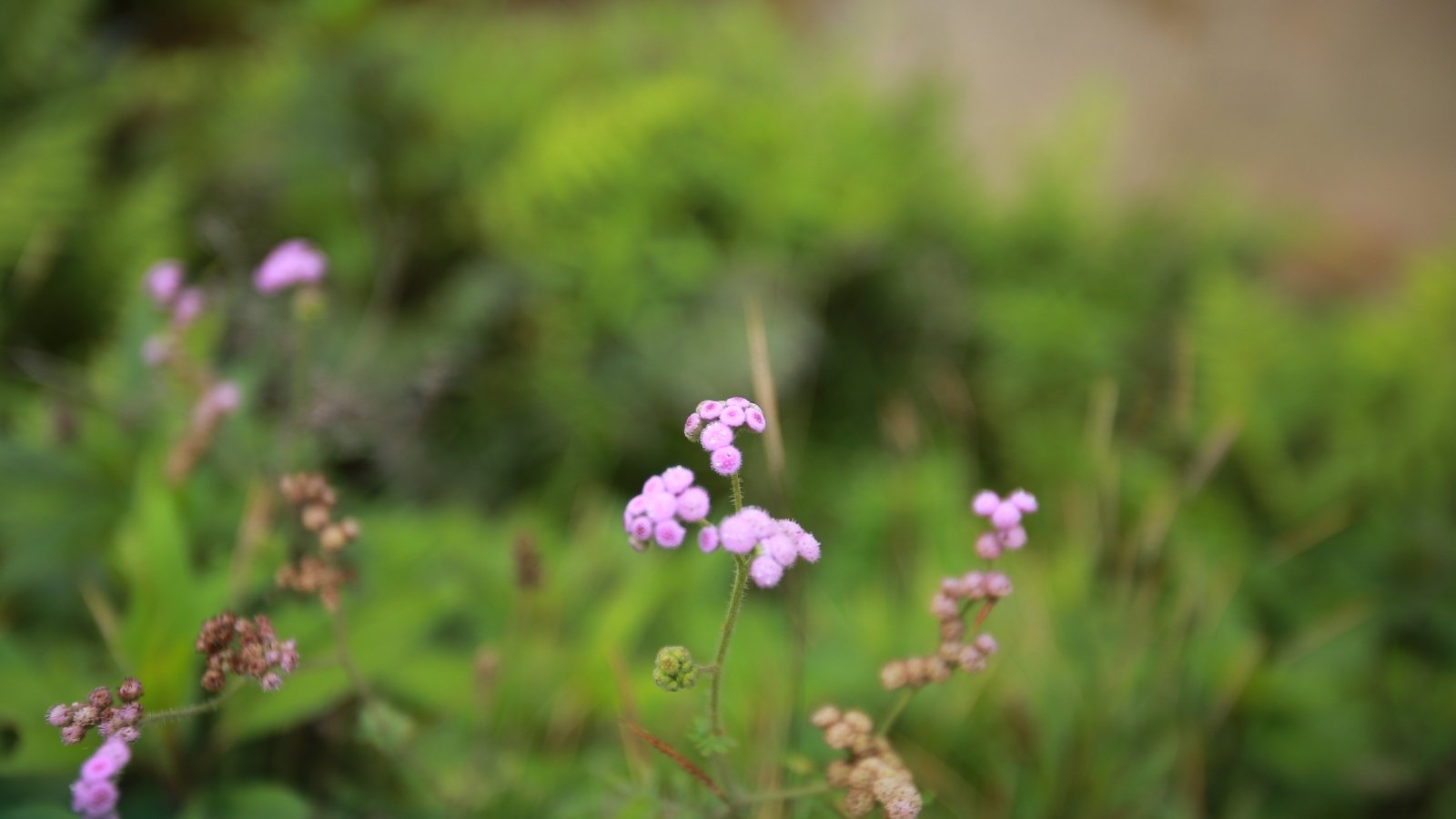
Blue mistflower is very easy to propagate. The quickest and most versatile propagation method is stem cuttings. It also grows readily from seed and mature clumps are easily divided in the spring or fall.
Cuttings
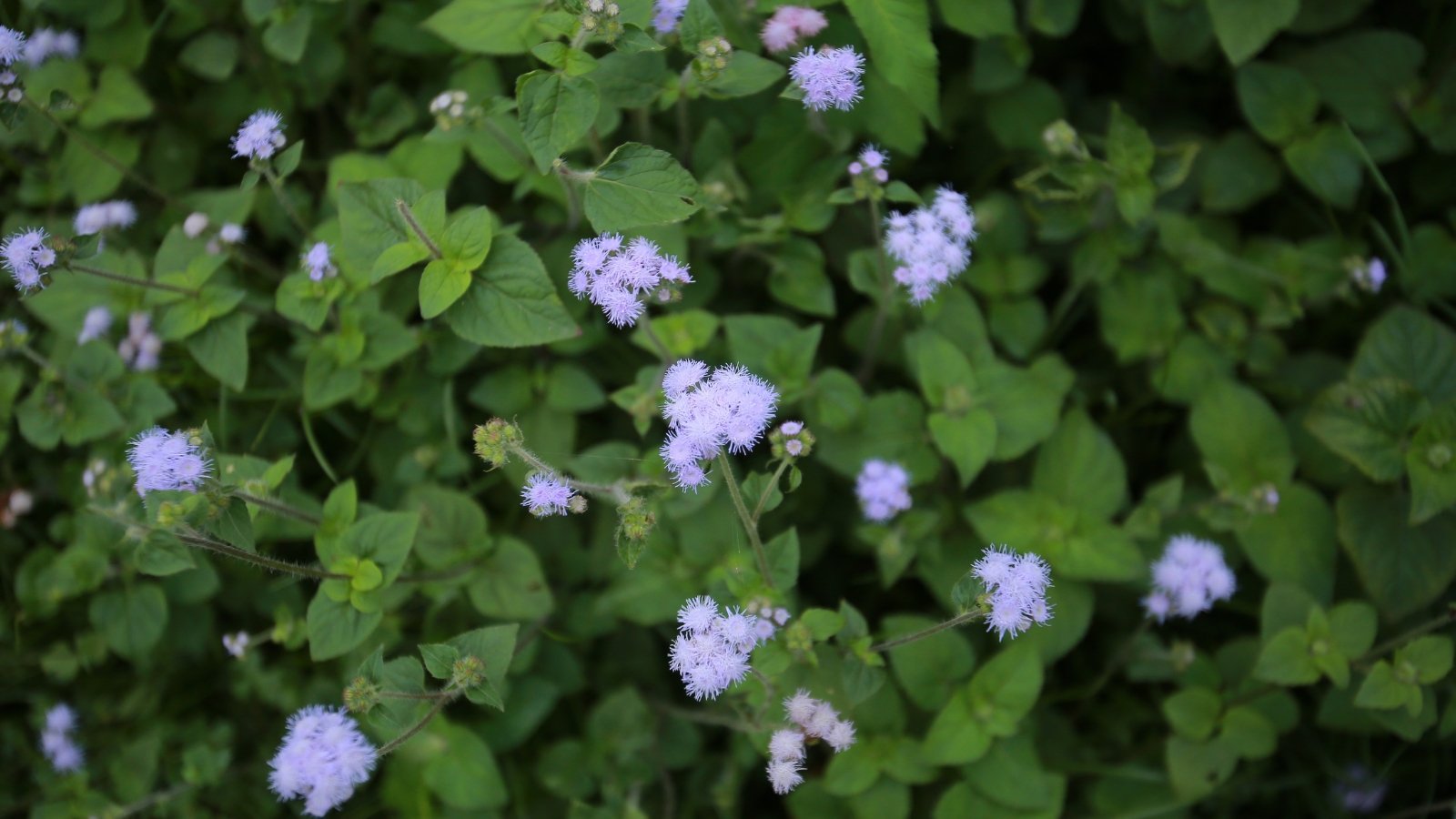
Growing mistflower from stem cuttings is simple and reliable. Take a four to six-inch cutting from a fresh, healthy stem. Remove any leaves from the lower third to half of the stem, leaving a few pairs of healthy leaves at the top. Place the cutting into a cup of water so the bare stem (not the leaves) is submerged. Most of your stem cuttings should form roots within a few weeks, and these successful cuttings can then be transplanted into pots or permanent in-ground locations.
Seed
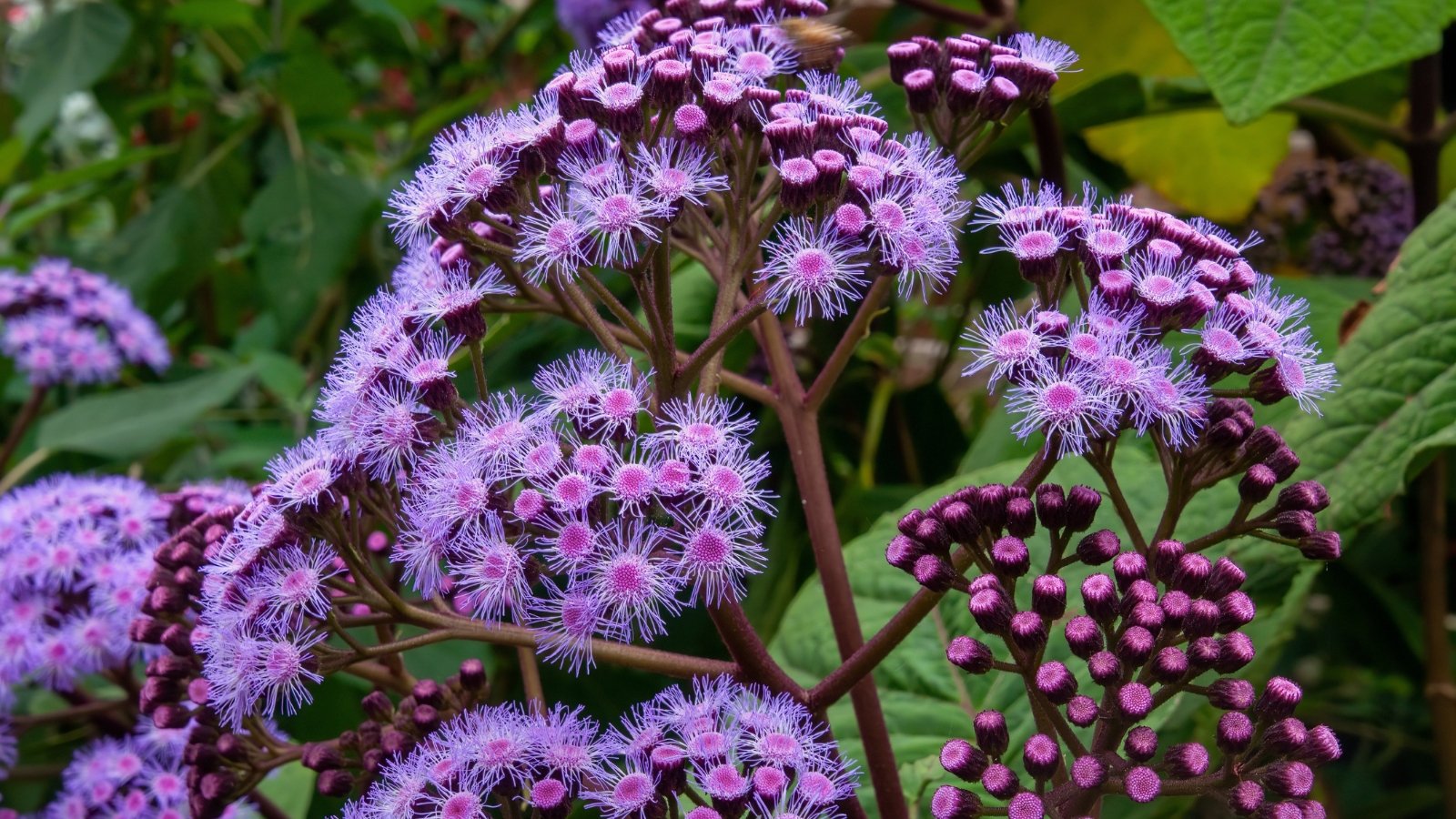
Cold stratify your seeds before sowing them if you’re starting indoors. Give them at least three weeks in 35°F (2°C). Then sow them on clean, moist soil and press seeds into the soil surface so they have good soil contact, but don’t bury them. Keep the seeds warm and lightly moist until they germinate in approximately one to two weeks. Alternatively, sow them outdoors in fall in areas with substantial winters.
If sowing the seeds indoors, transplant the seedlings to a protected outdoor location once the weather has warmed and continue to keep them moist. When the seedlings are several inches tall, transplant them to their permanent location. Seeds started in early spring are capable of blooming by the fall of their first year. If they don’t have enough time to bloom in their first year, they will certainly bloom in their second year of growth.
Division
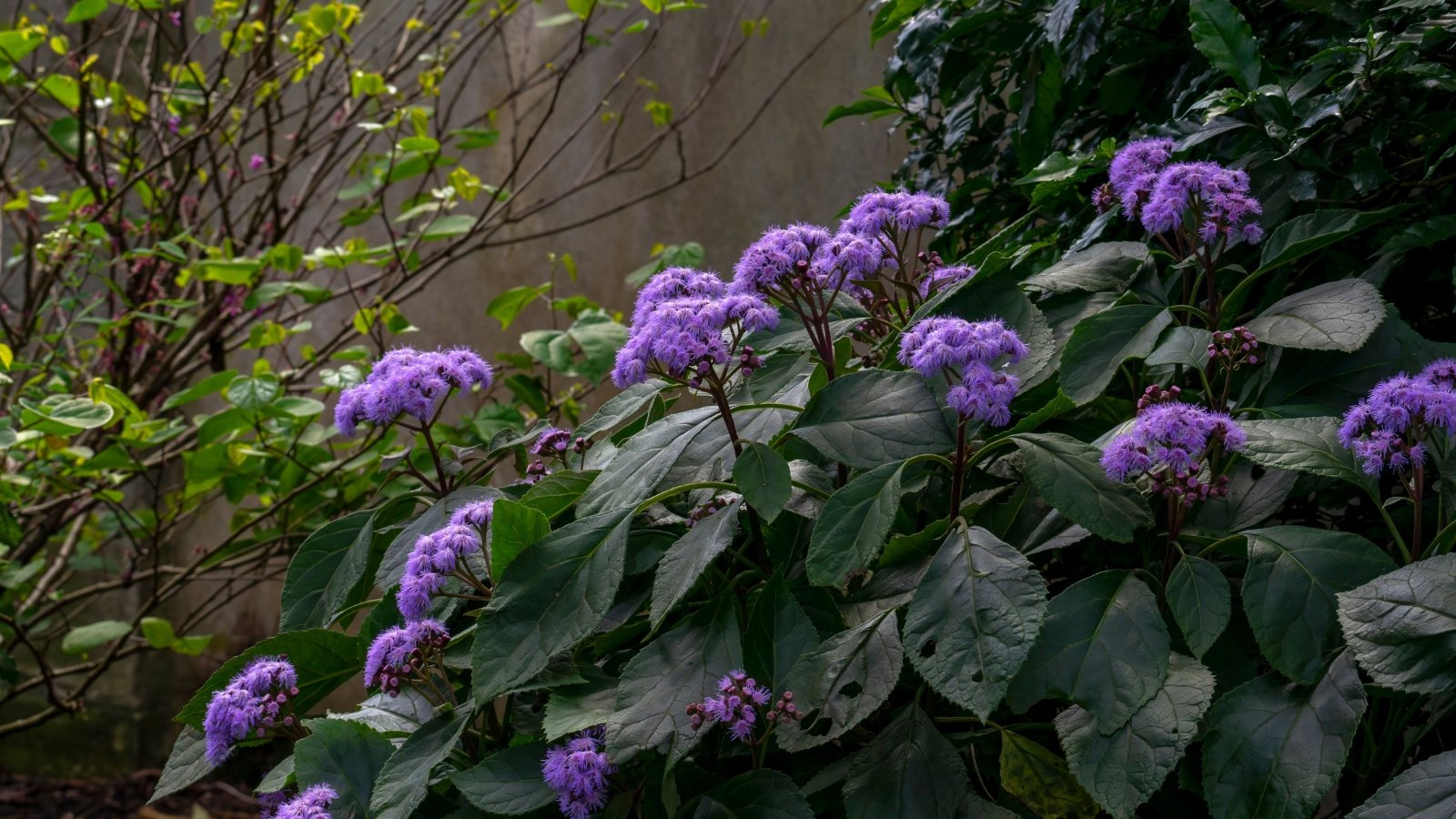
Mature clusters that have developed several vertical stems can be divided. Divide them in early spring or later in the fall, ideally when the weather is cool, and the plants aren’t in their most active growth phase. An ideal time to divide clusters is when you’re thinning your plants to improve airflow or manage the size of a colony.
Transplanting
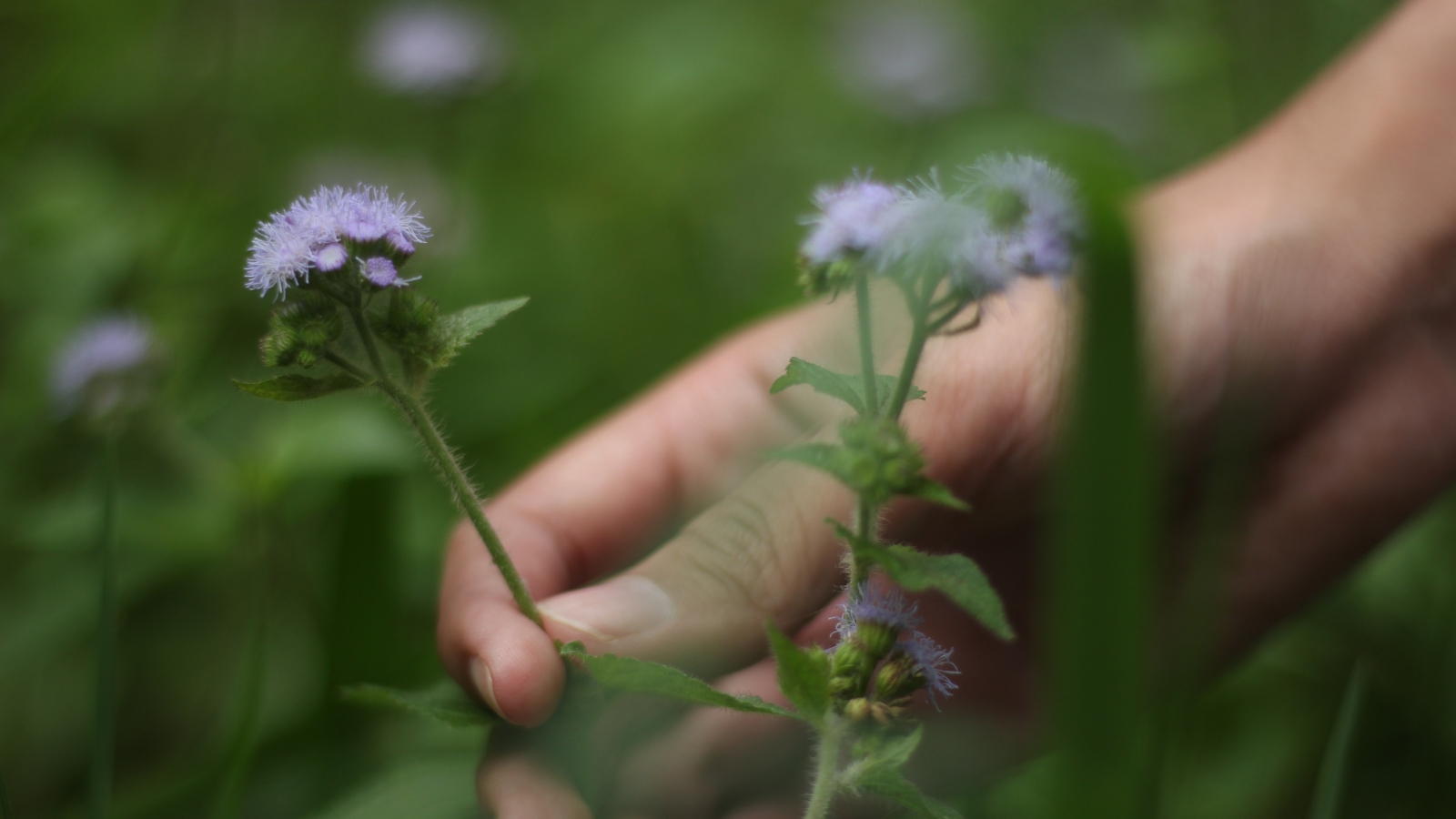
Do you have a rooted stem cutting or potted plant that’s ready to be transplanted? Transplanting is a straightforward process that requires only a shovel or hand trowel (depending on how large the plant is), and perhaps a pair of comfortable gardening gloves.
Identify the location where you’d like your mistflowers to grow to maturity. Begin by digging a hole large enough to accommodate the current root mass. This is an excellent time to amend the soil if you want to add any organic compost to enrich your plot.
Carefully remove your plant from its pot and transfer it into the hole. Backfill around the roots and tamp down the soil around the base of the plant. Finally, give your mistflower a thorough watering to help it settle in.
How to Grow
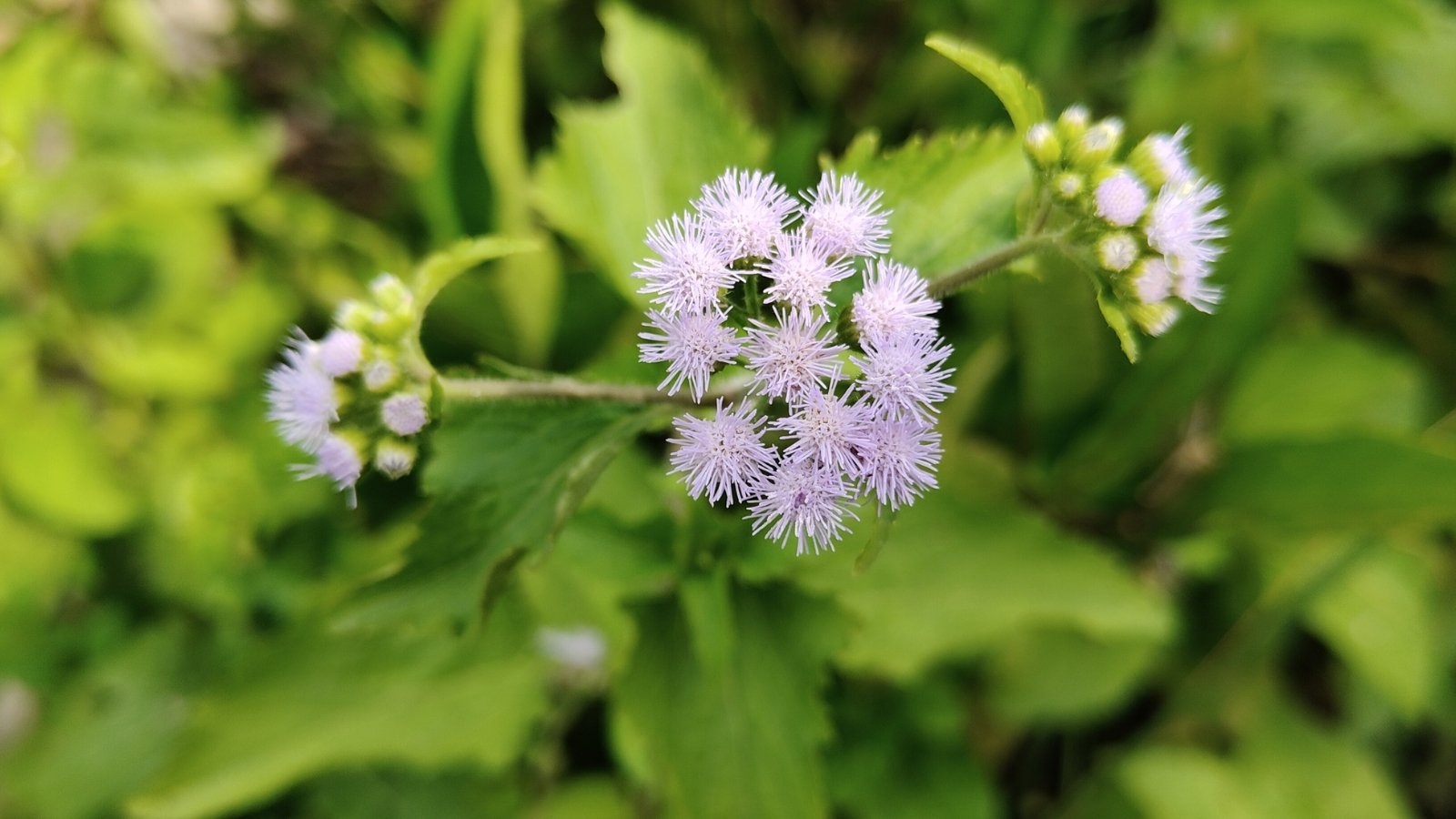
If you can provide a sunny or partially sunny habitat with consistently moist soil, you’re ready to grow blue mistflowers. Your greatest challenge will likely be keeping your plants contained. If you provide good growing conditions, they can spread quickly.
Sunlight
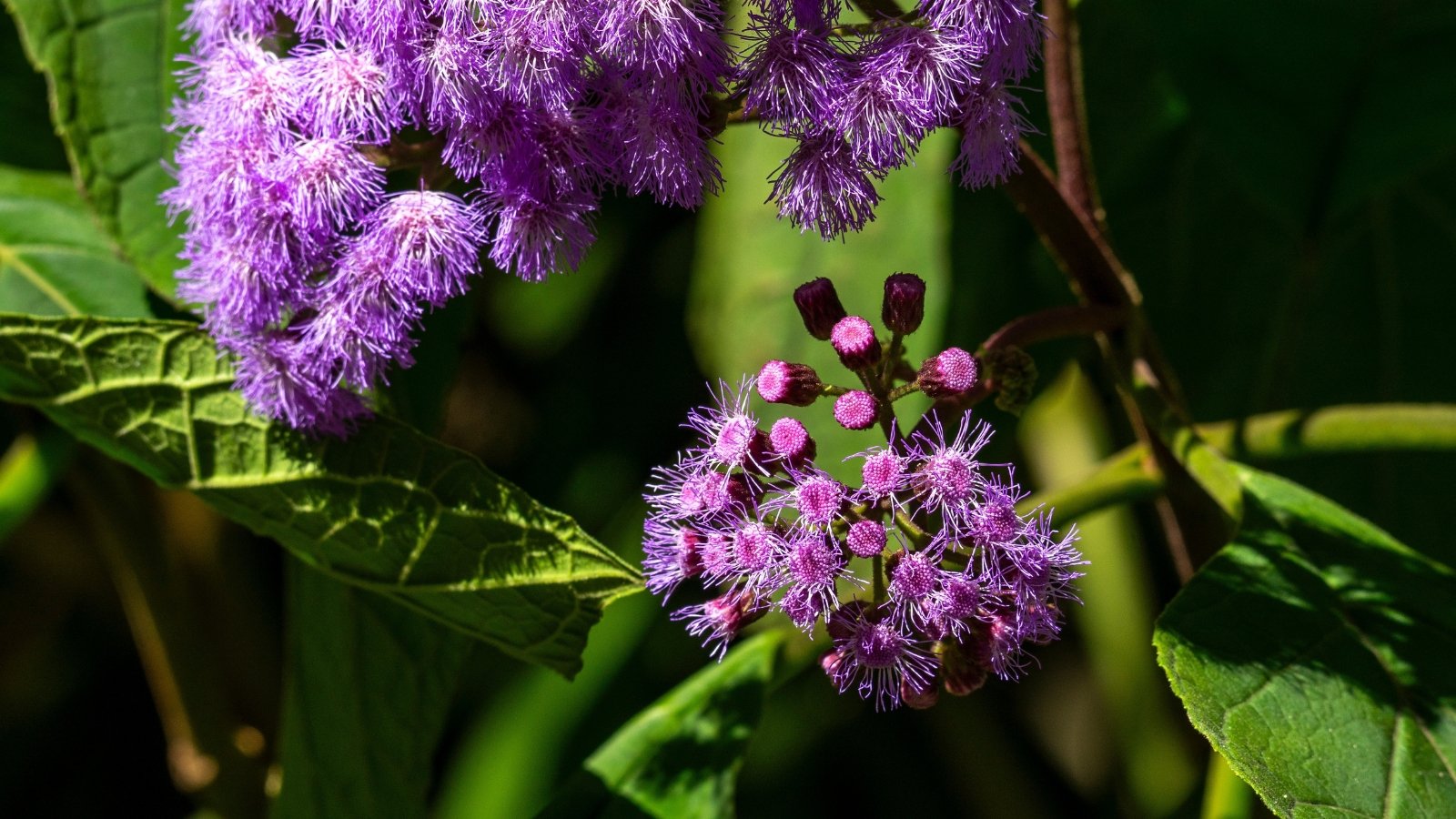
Blue mistflower prefers a location with full sun or light shade. Shade-grown plants tend to lean towards the light but light shade is fine. Try to find a location where they receive at least four hours of direct sunlight each day for the most robust and compact growth.
Water
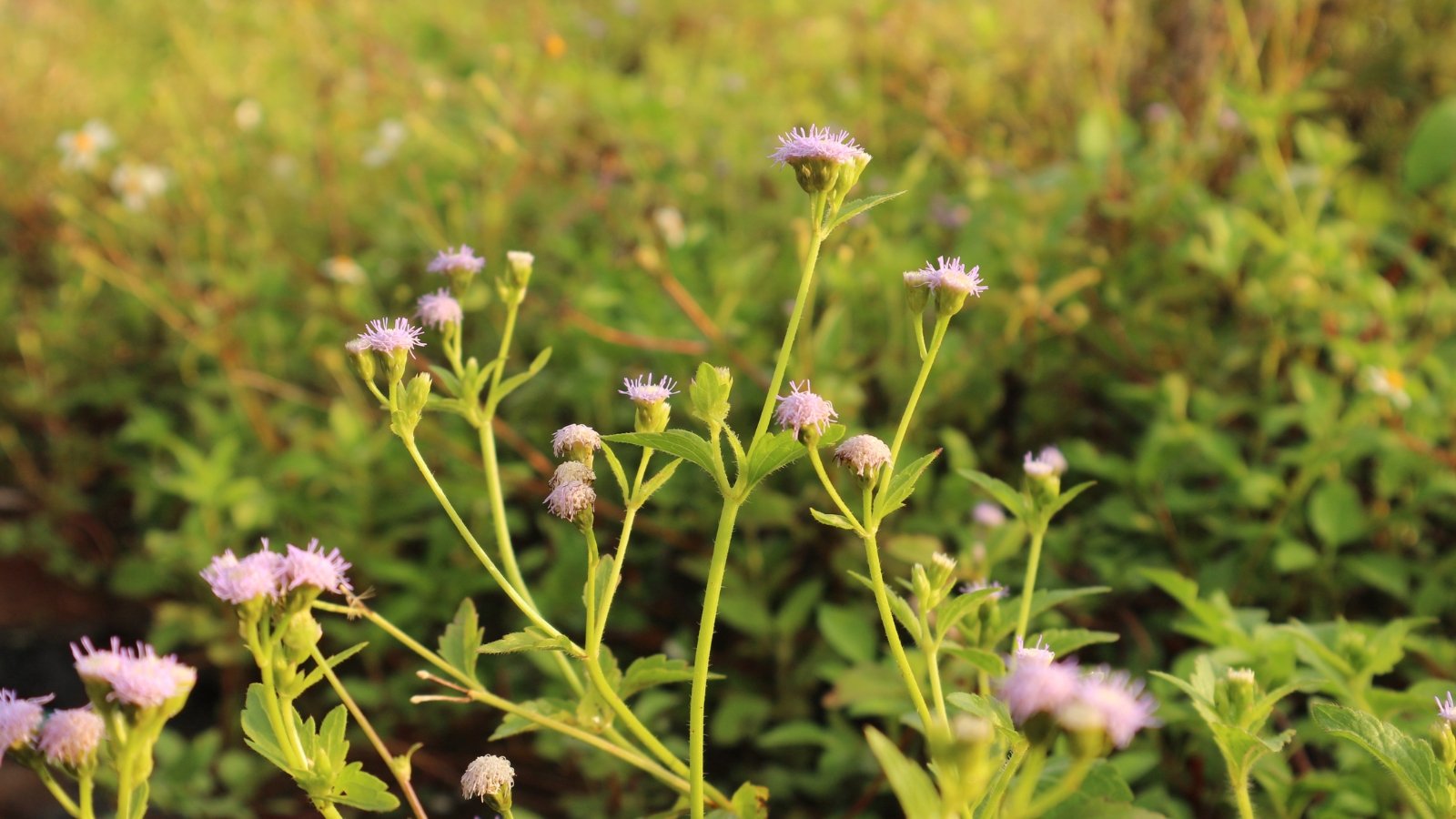
These thirsty perennials love moist soil. Grow them in a location with naturally moist soil so you won’t need to worry about regular watering. During periods of drought, give mistflowers an occasional deep watering to prevent them from drying out. If hand watering, it can be helpful to have a long-handled wand to direct the water to the base of the plant and roots where it’s most needed.
Soil
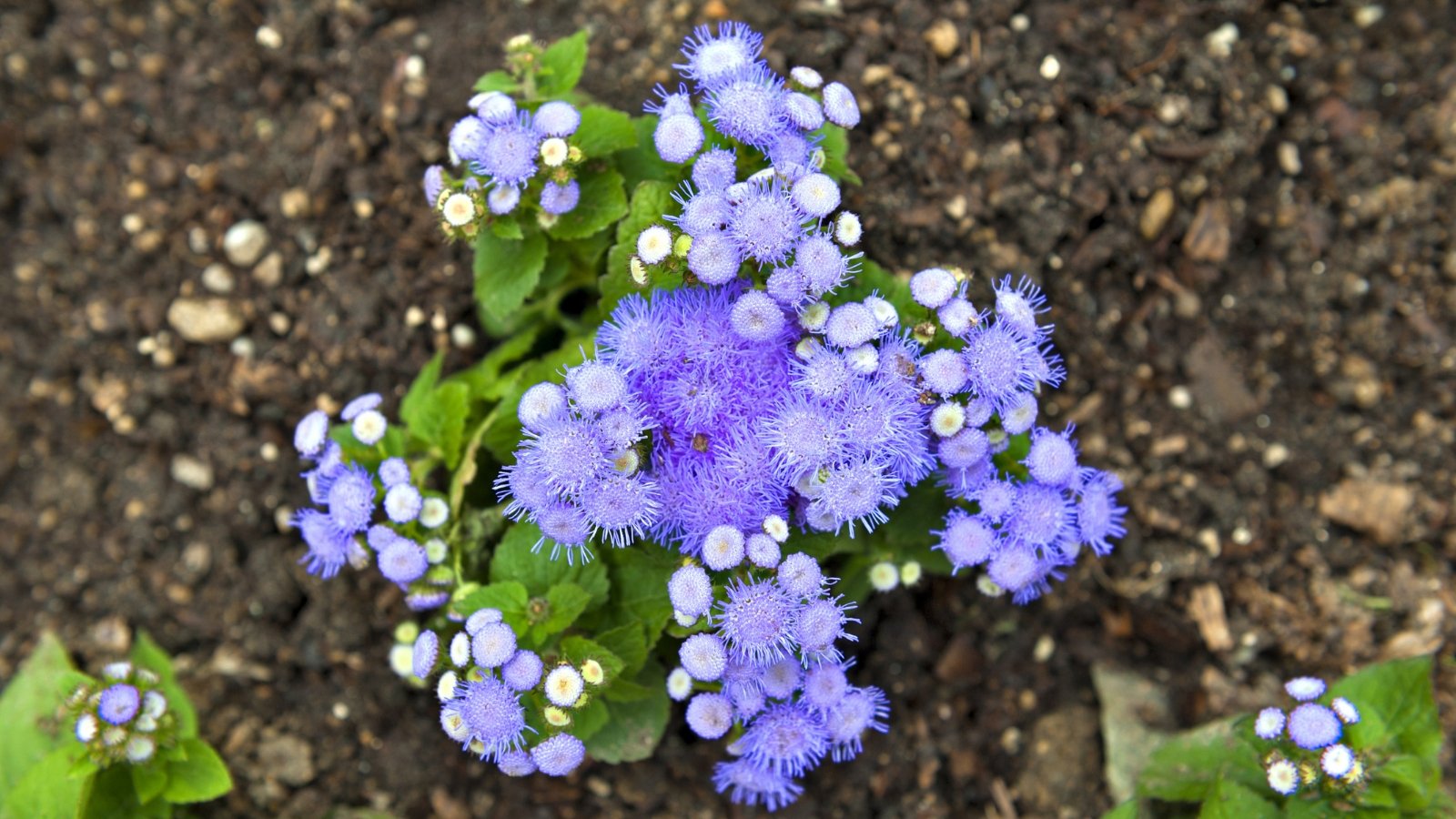
The best soil for blue mistflower is organically rich and fertile, although these plants also tolerate average-quality soil. The soil should hold moisture but also be well-drained so as not to be constantly boggy. The pH should be neutral to acidic.
Climate and Temperature
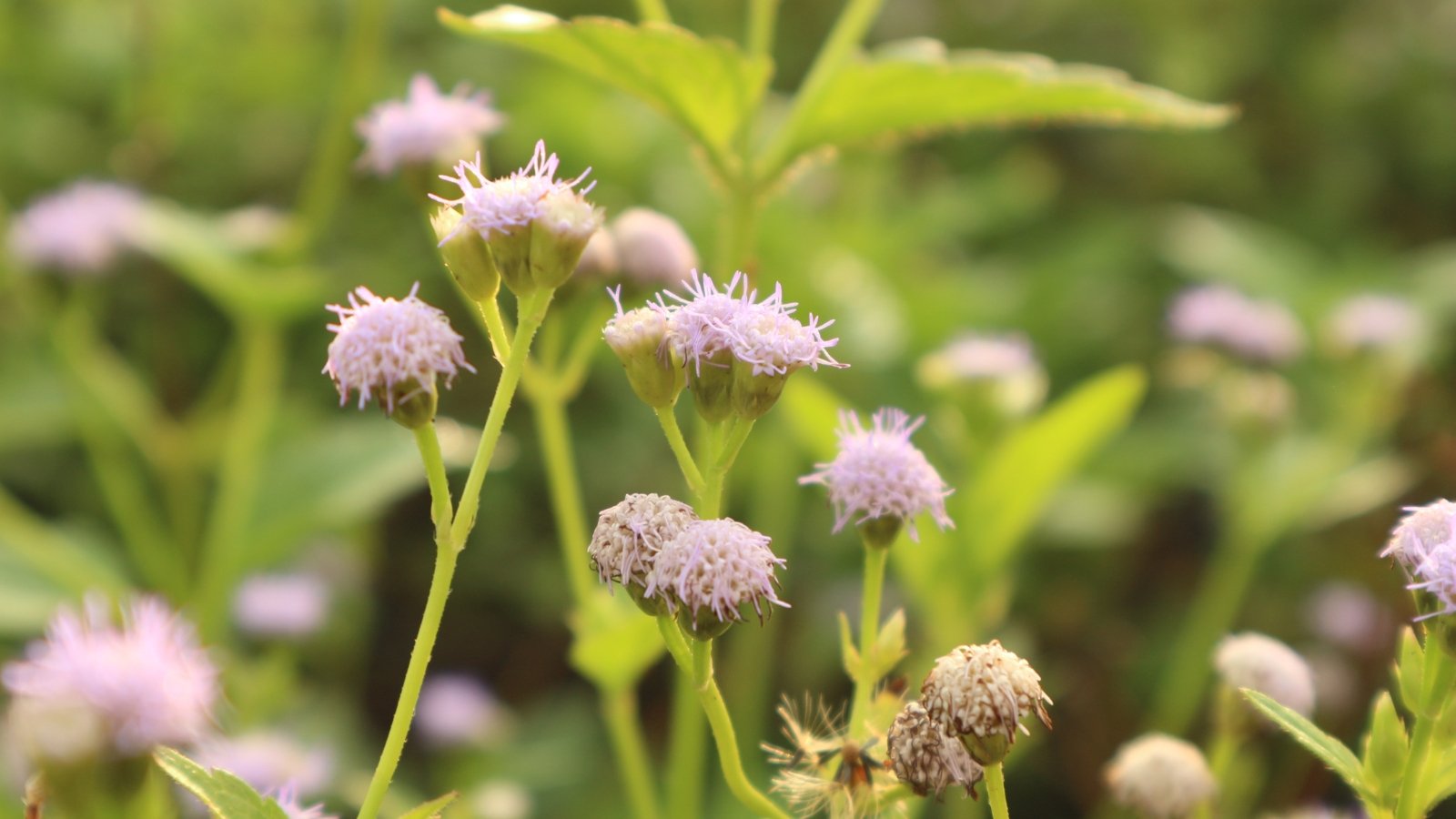
This is a warmth-loving plant. Blue mistflower is a perennial in USDA plant hardiness zones 5-10. They are tolerant of heat and humidity, as well as freezing winter temperatures. In climates colder than zone 5, grow mistflower as an annual.
Fertilizing
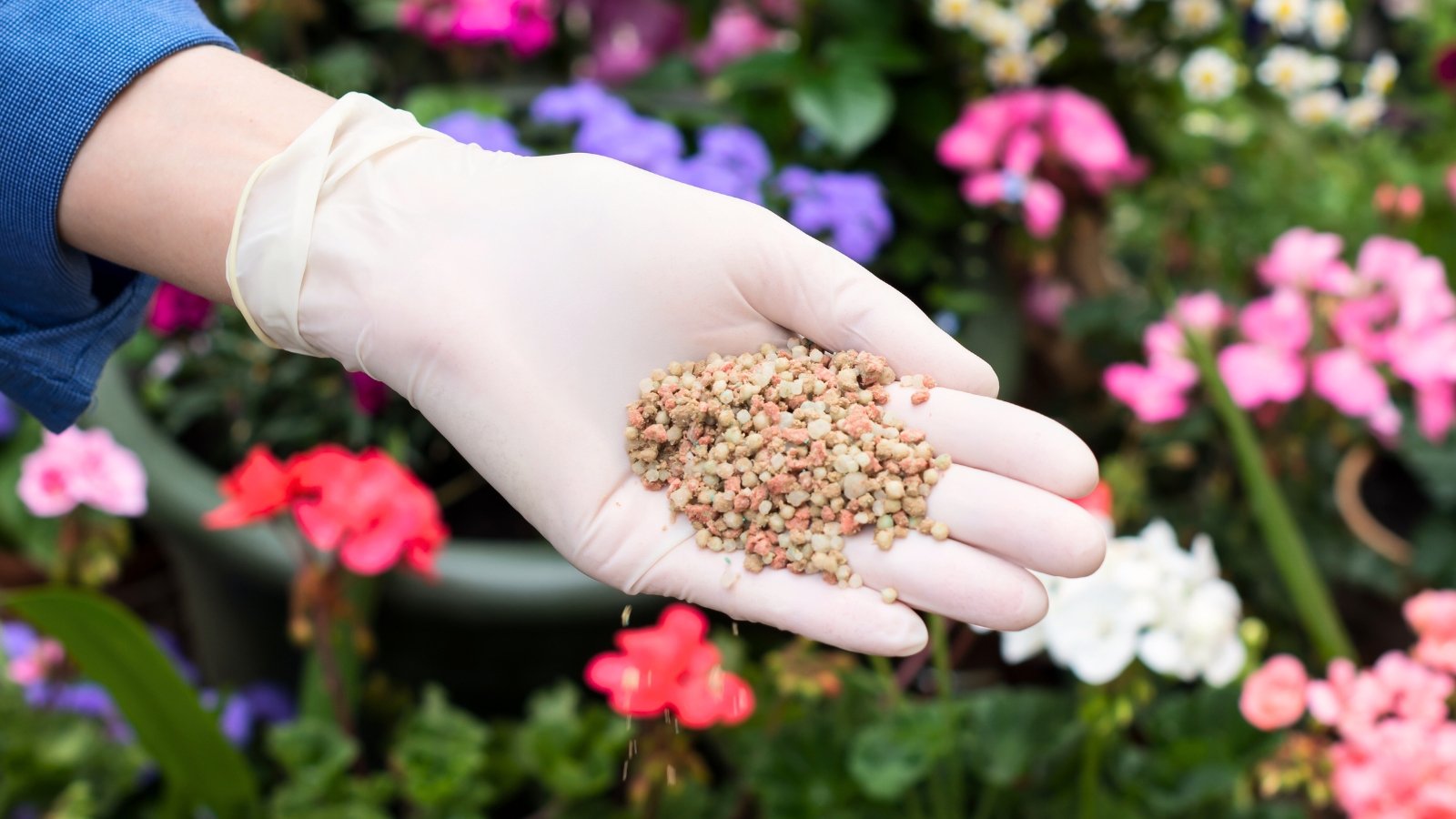
If you’re growing mistflower in organically rich soil, you shouldn’t need to worry about adding extra fertilizers. If, however, your plants are growing in poor soil conditions, amend the soil at the time of planting to give your plants a great start. You can always add a top dressing layer of compost or manure to your flower bed to give a mid-season nutritional boost.
Maintenance
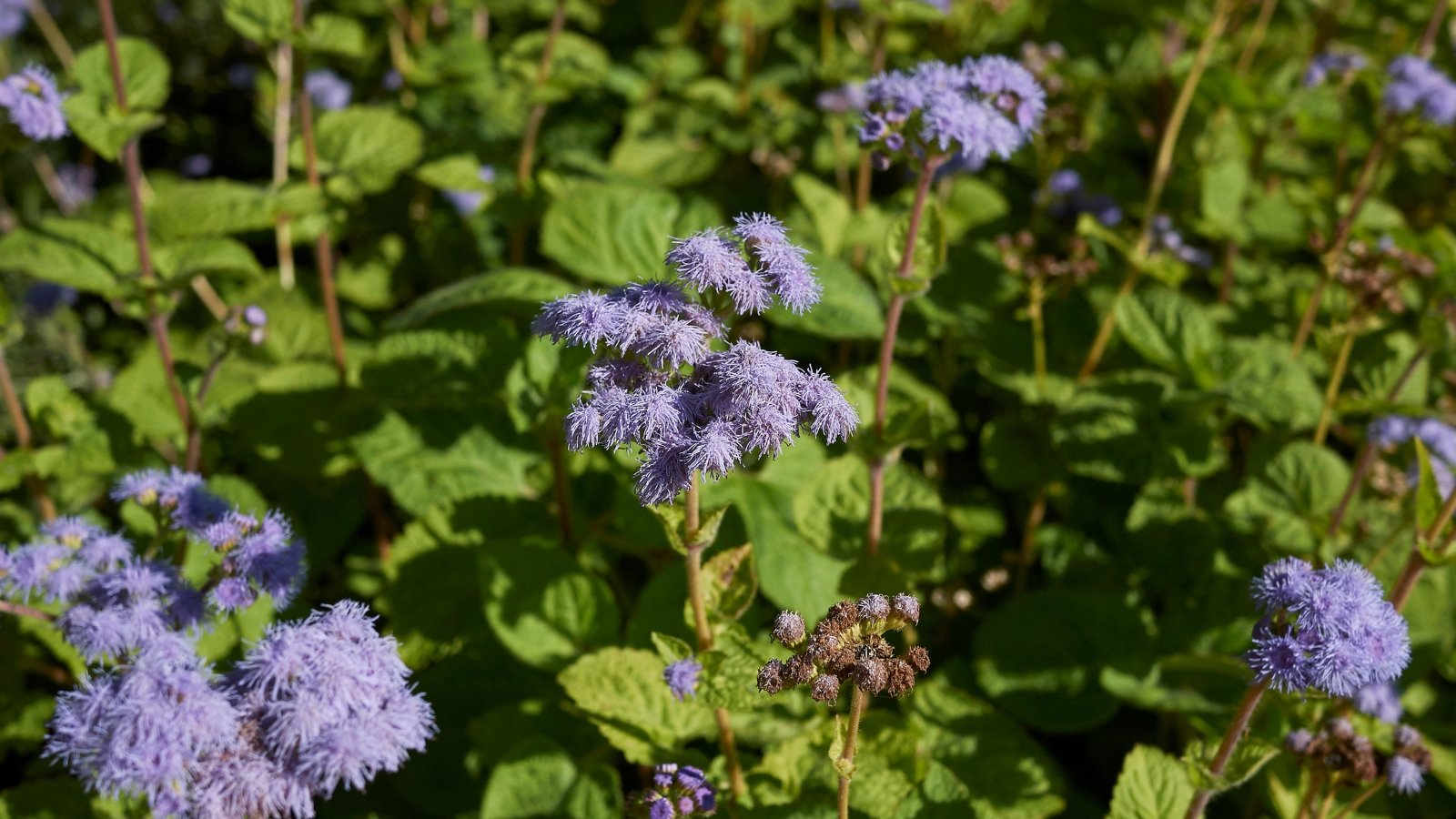
Blue mistflower is a medium-maintenance plant. They grow fast and spread quickly to form large stands of vegetation. Your biggest maintenance task will be keeping your plants from spreading too much. Thin them regularly by removing unwanted seedlings and dividing larger colonies. Deadhead spent flowers to help control aggressive self-seeding.
Garden Design
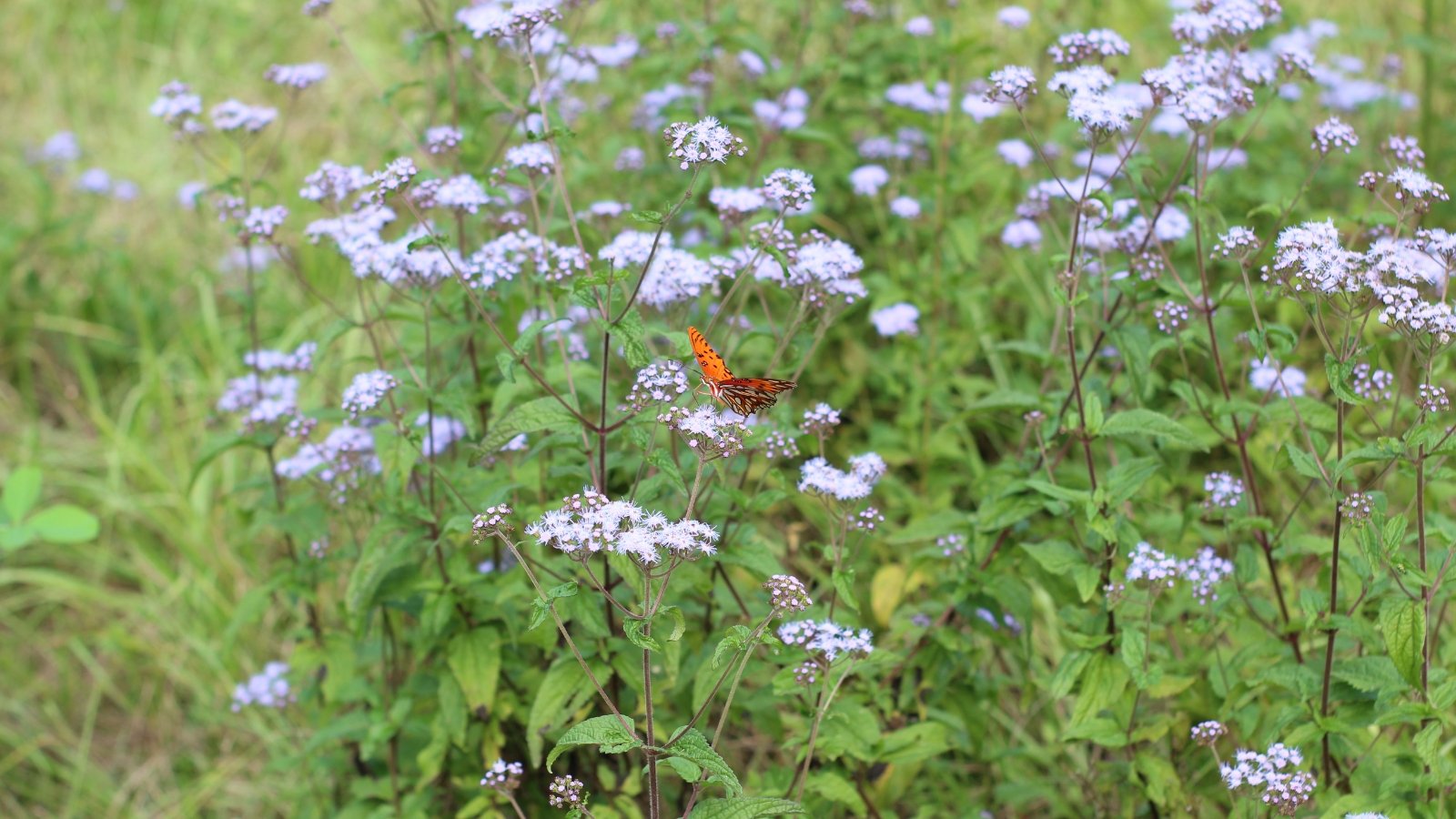
Mistfowers are an ideal choice for a larger naturalized area with plenty of space to accommodate their spreading habit. Does your yard contain a pond, lake, stream, or other wetland? Establish a few mistflowers to create a blooming wetland border. They are also an ideal choice for a larger rain garden or moist meadow planting.
Since they perform well in light shade, you can place blue mistflower along a wooded edge to help create a colorful border between your sun garden and woodland garden areas. Add mistflowers to your butterfly garden to attract pollinators from late summer to fall.
Their modest stature allows you to use them as a focal point or as a clump-forming edging. Grow them alongside some other medium-height plants that bloom during different seasons for plenty of long-lasting color. Grow them with other moisture-loving plants that will all thrive together in the same habitat.
Varieties

You won’t find many mistflower cultivars, but you may encounter a few other species of mistflowers, depending on where you live. Keep an eye out for lookalike annual bedding plant species that closely resemble these native perennials.
Gregg’s Mistflower, Conoclinium greggii
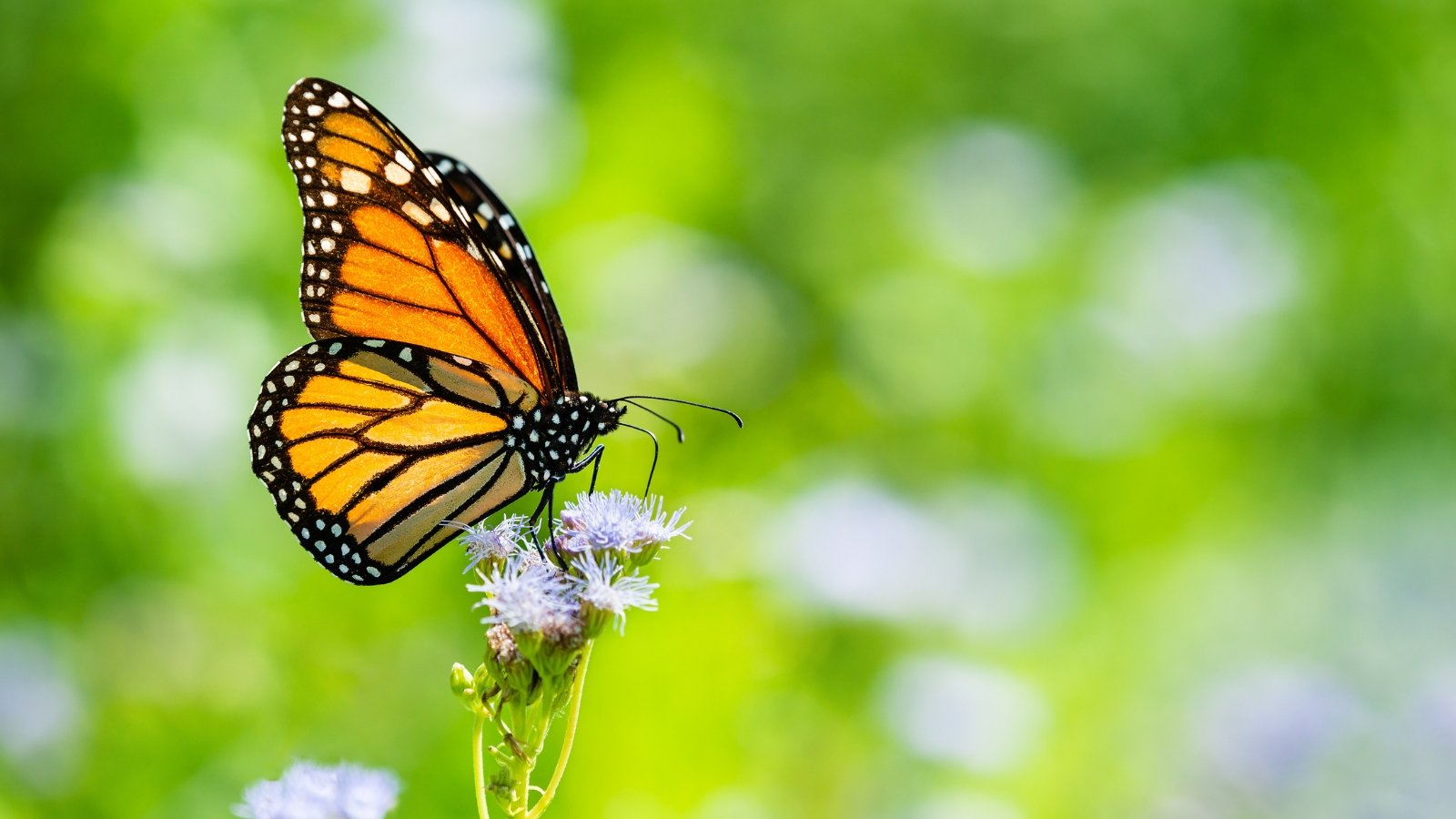
This mistflower species is native to Texas, New Mexico, and Arizona. This perennial wildflower grows up to two feet tall with fluffy-looking pale purplish-blue flower heads. It is much less common than the blue mist flower and much more limited in its distribution, although it also thrives in wet soil conditions.
Betony-leaf Mistflower, Conoclinium betonicifolium
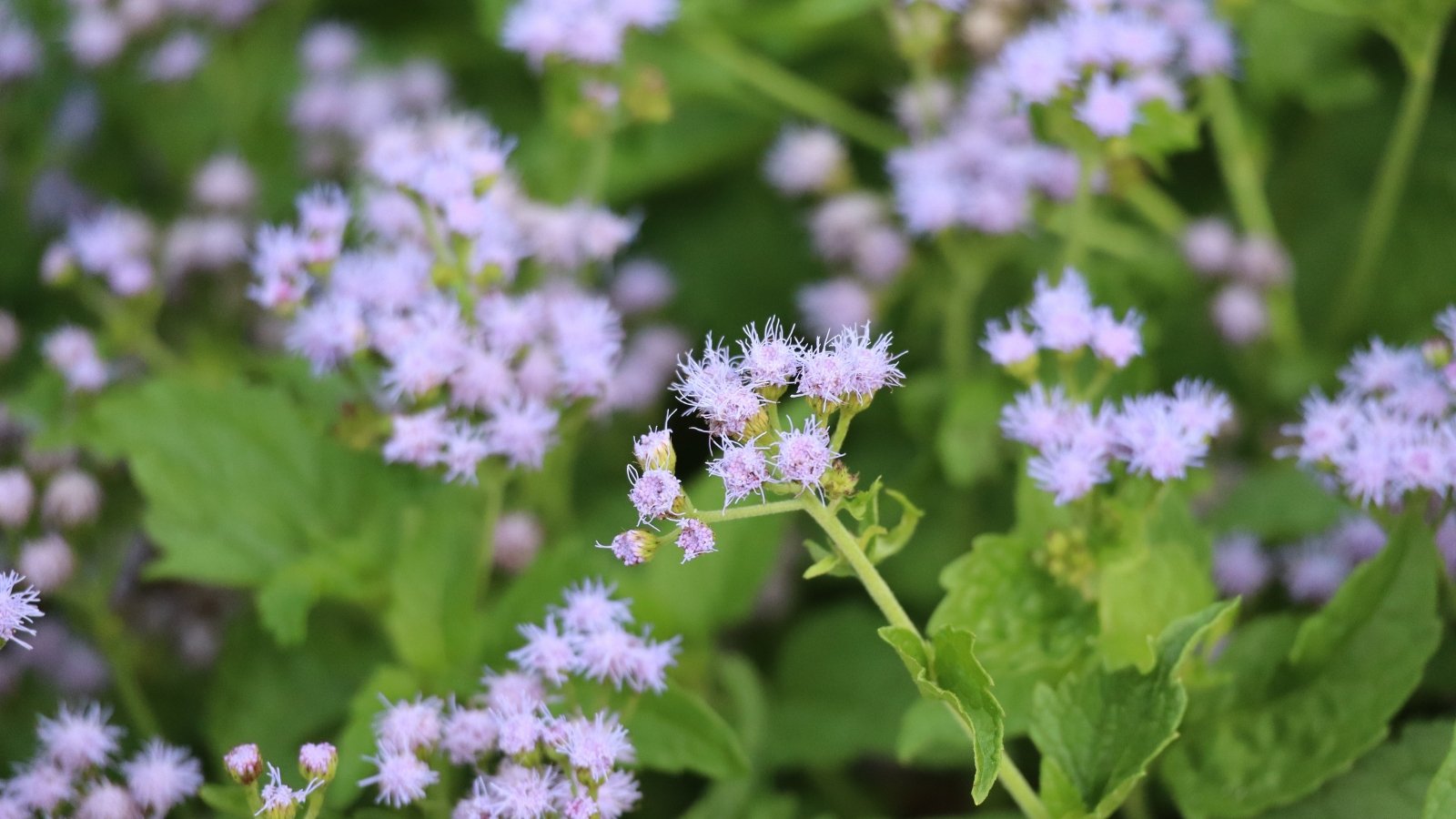
The betony-leaf mistflower is an herbaceous perennial native to southern Texas. It blooms in spring and summer with pale purple flowers. This mistflower species prefers sandy soils and is more tolerant of dry conditions than the blue mistflower.
Ageratum, Ageratum houstonianum
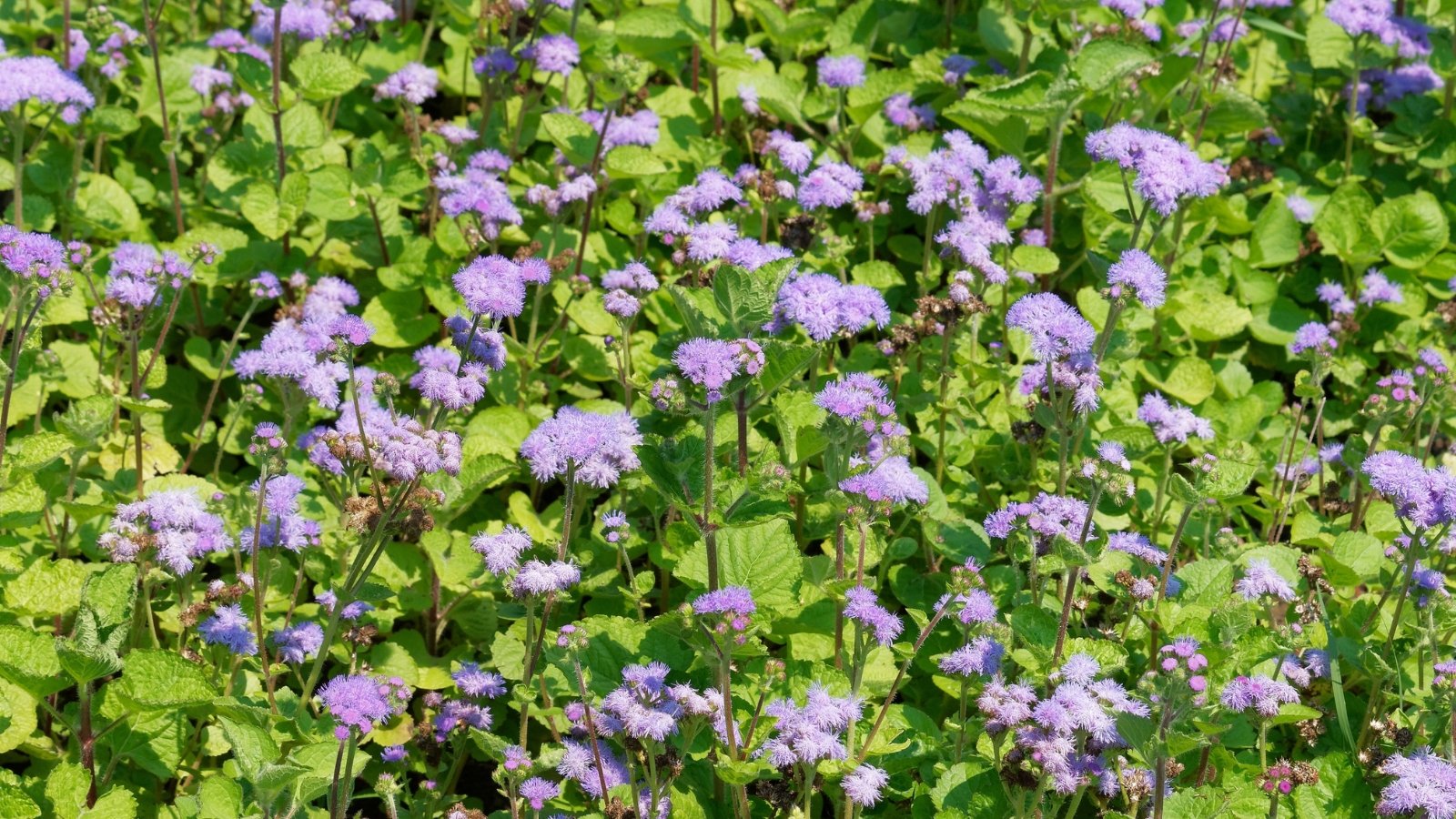
Ageratum is an annual native to Central America and is not closely related to mistflowers, although they look very similar. It is commonly sold as an annual bedding plant and has blue, pink, purple, or white flowers. These plants are easy to grow, bloom throughout the summer, and look great when planted in masses.
Wildlife Value
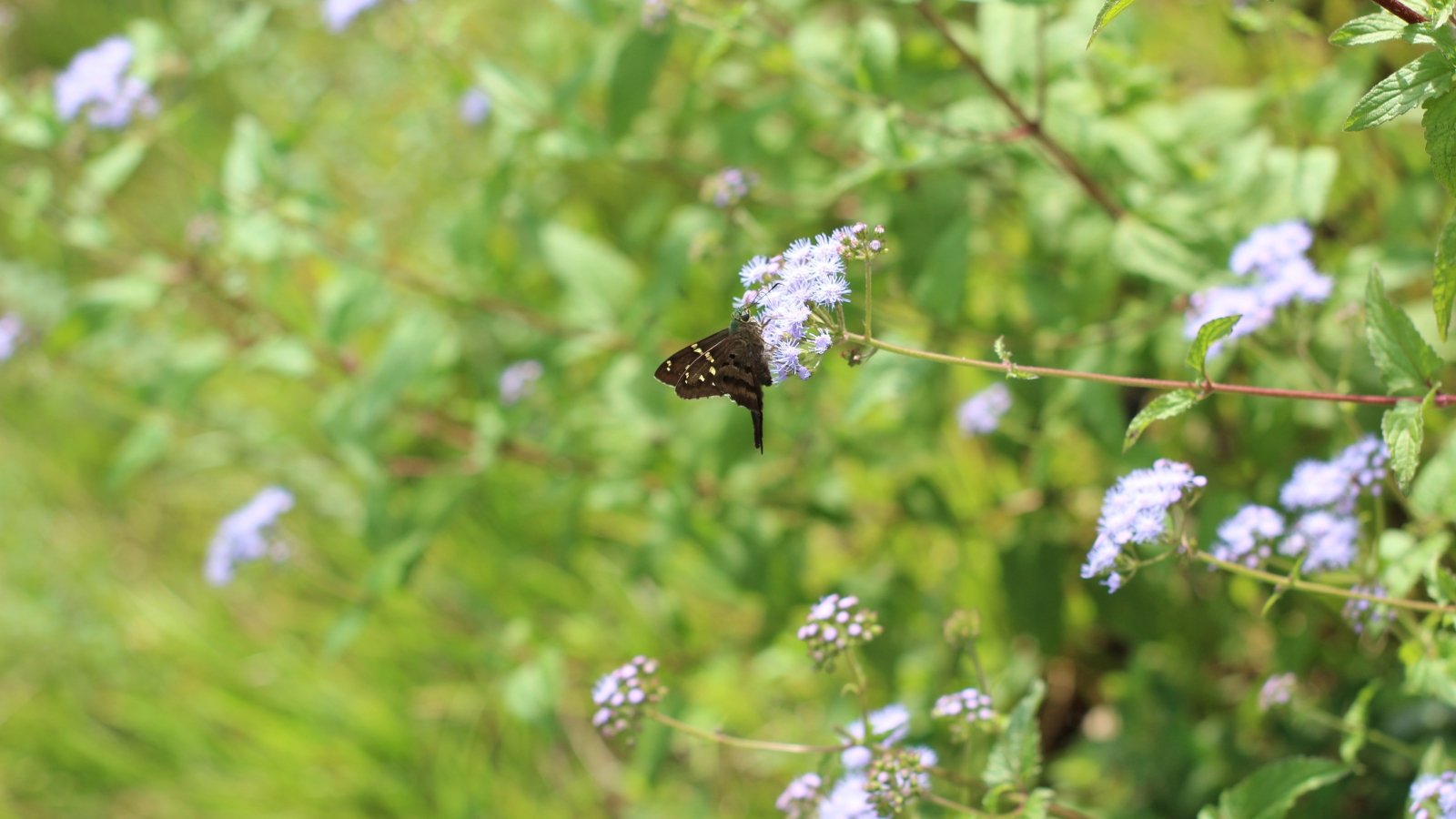
Blue mistflower provides plenty of value to your wildlife-friendly landscape. It provides nectar-rich flowers for butterflies, bees, and other beneficial insects. Since it blooms in late summer and fall, it provides a valuable late-season food source for pollinators. Birds will eat the seeds during the fall and winter months. Deer and rabbits may nibble on these plants but generally prefer to eat other vegetation.
Common Problems
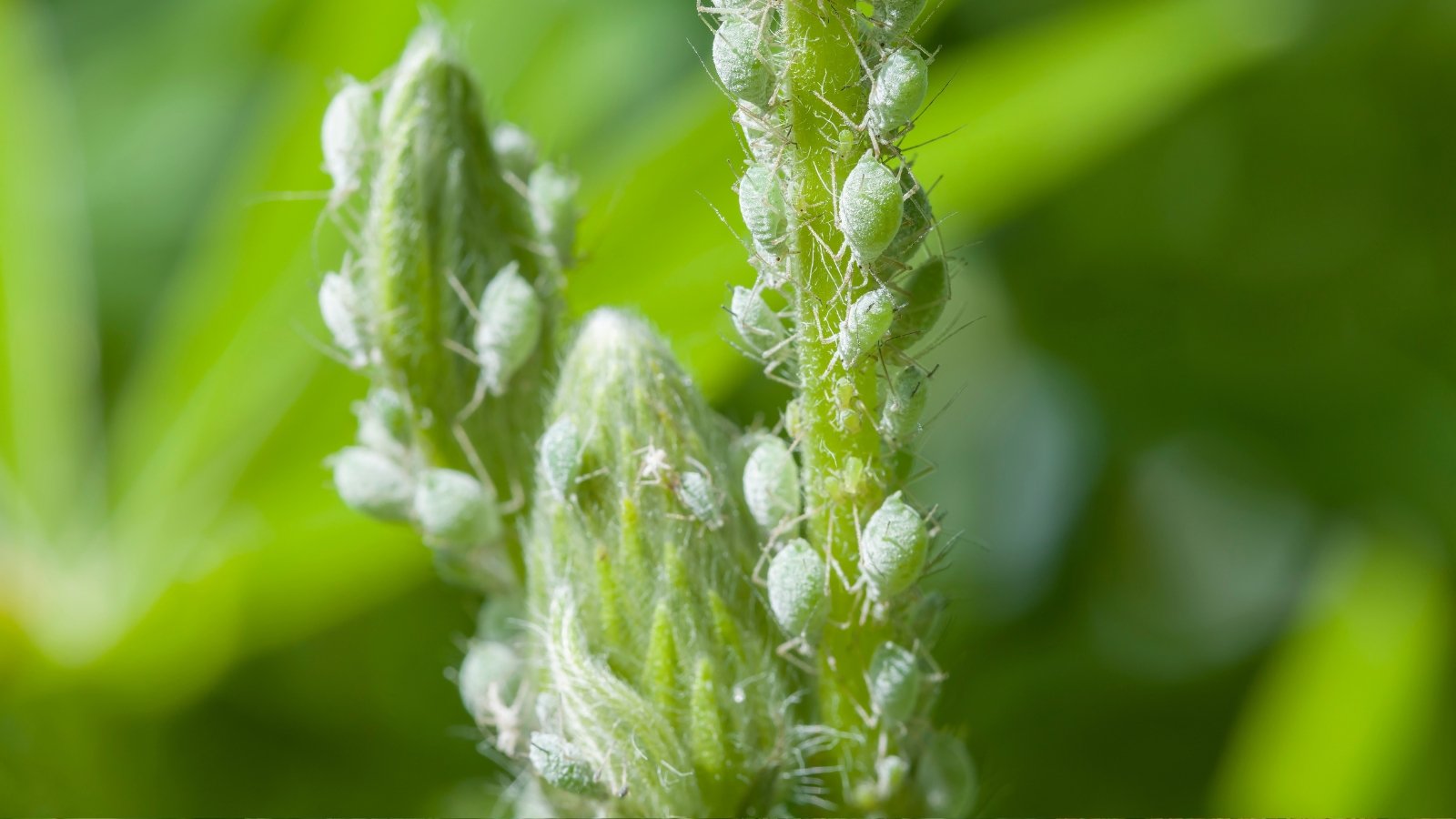
The biggest problem you are likely to encounter with blue mistflower is that it grows very quickly and can become weedy in smaller garden settings. If you’re looking for an attractive flowering plant for a smaller plot, you may want to consider other less aggressive options.
Aphids
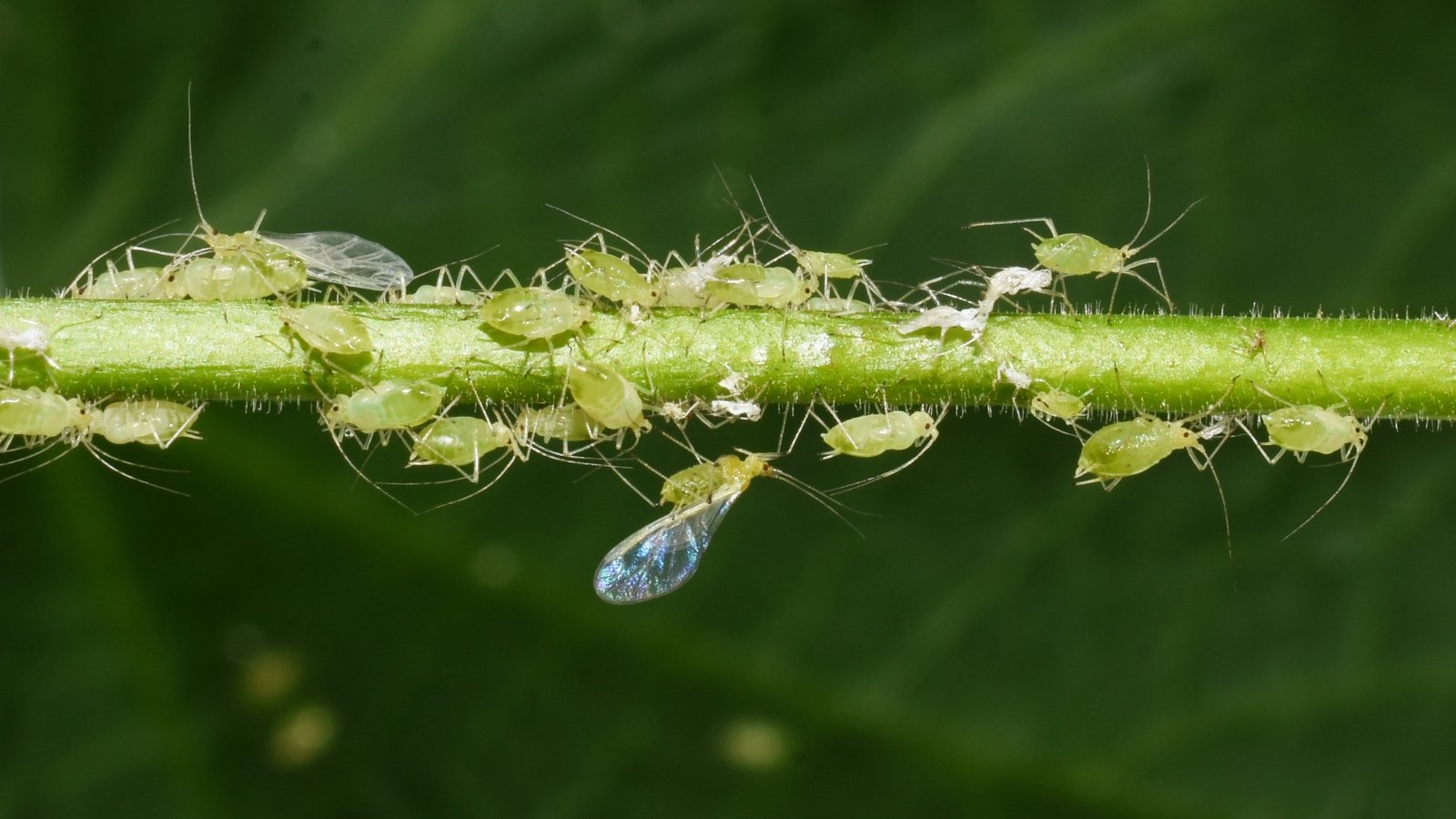
These small, soft-bodied insects have piercing mouthparts. They gather in large numbers and suck plant juices. Aphids are clearly visible to the naked eye when they cluster together along the stem or on the undersides of leaves.
Aphids are unlikely to cause major damage to mistflowers but these ubiquitous pests do show up periodically and cause minor damage. Infected plants may develop yellowing leaves and a general lack of vigor. Dislodge aphids and disturb their feedings by spraying them with a jet of water. Severe infestations can be effectively treated with insecticidal soap.
Leaf Miners
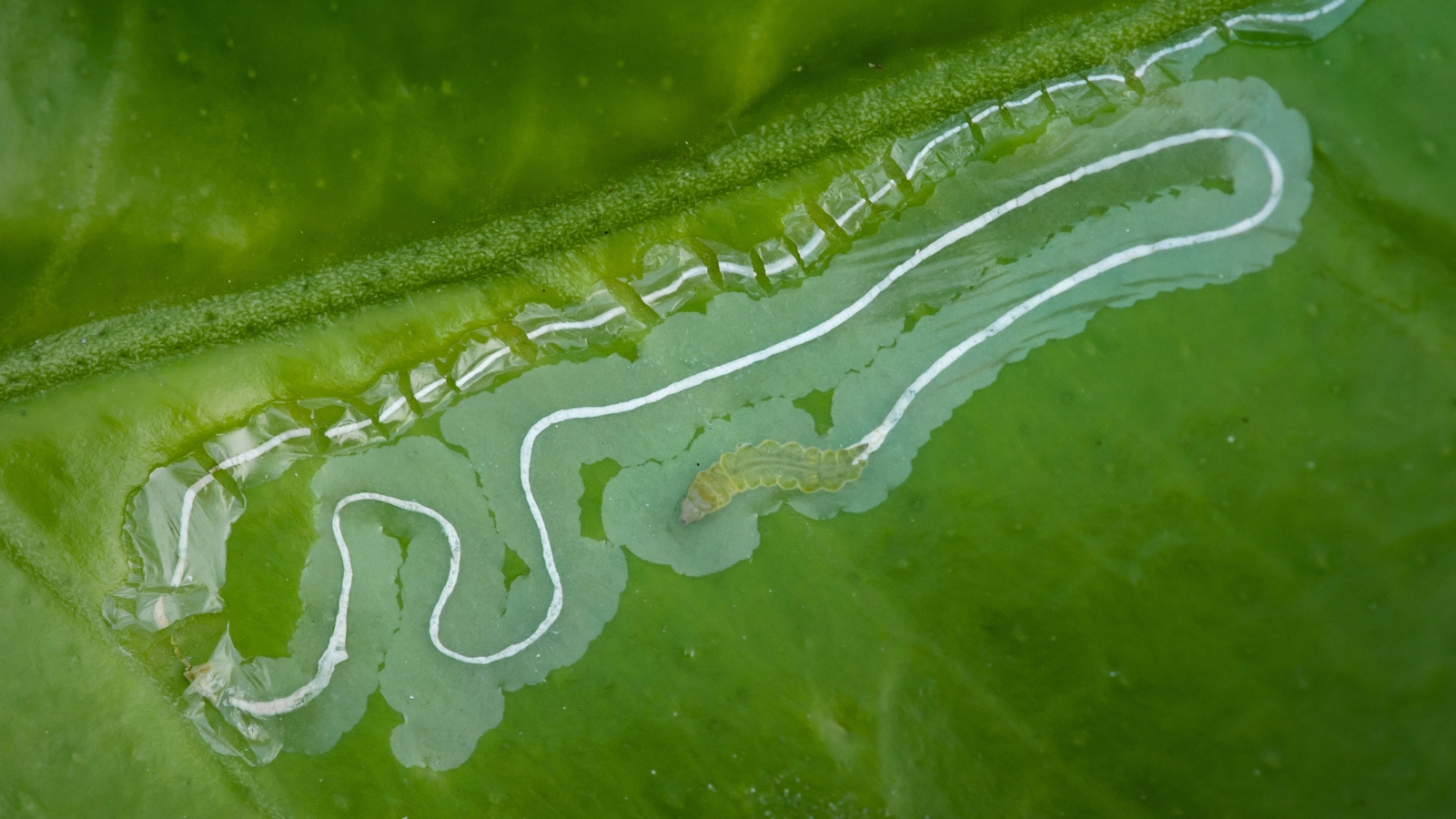
Leaf miners are the larvae of the leafminer fly. The tiny larvae burrow into healthy plant leaves and eat the inner plant tissue, leaving behind crisscrossing white or gray paths of dead tissue.
Leafminers are difficult to control but fortunately aren’t considered a major pest of mistflower, just a minor nuisance. Spraying them with insecticides is ineffective because the pests are protected within the plant. Removing and destroying severely infected leaves can help improve your plant’s appearance but rarely impacts the leafminer population.
Powdery Mildew
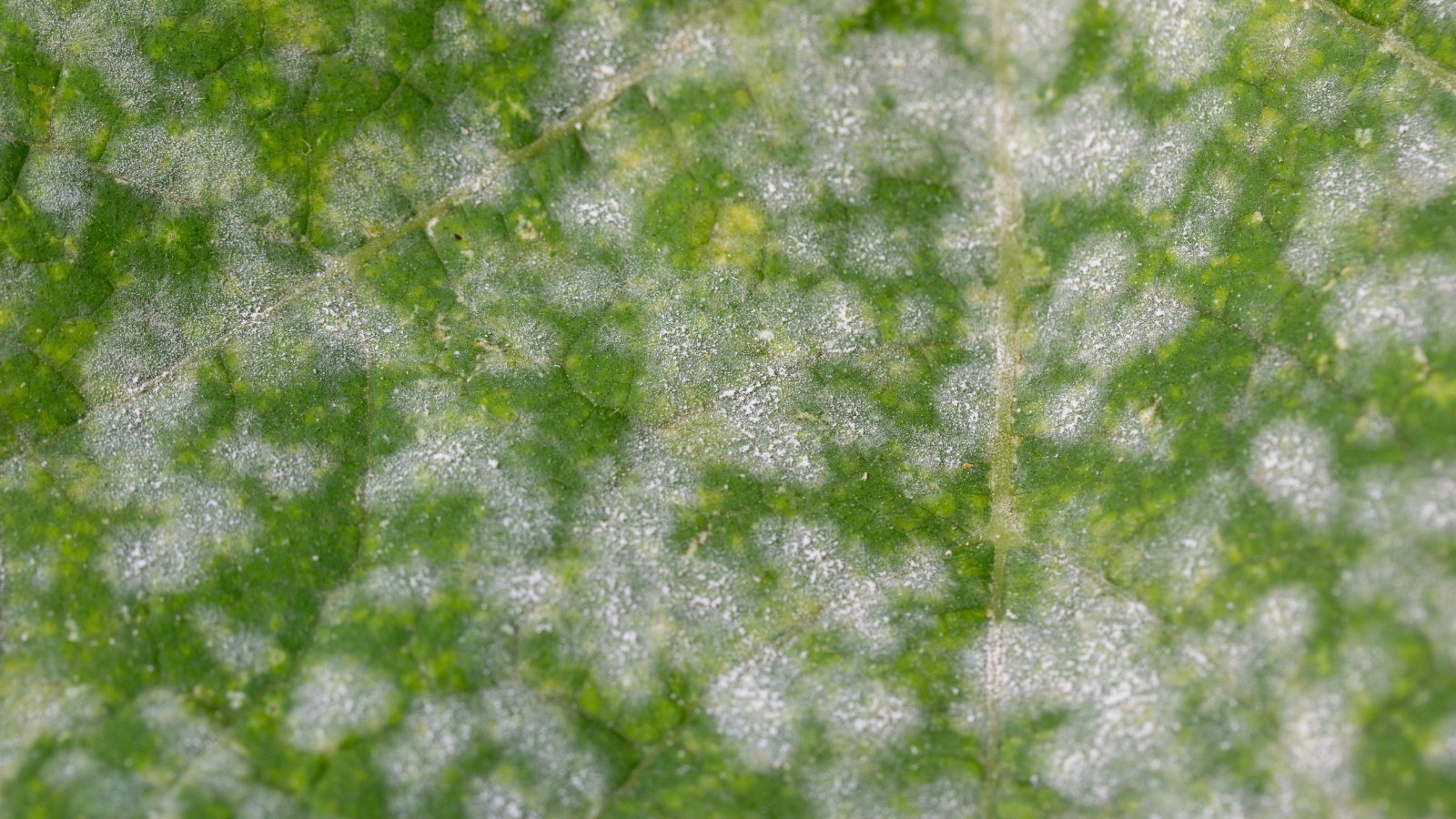
Powdery mildew is a fungal infection most prevalent in warm, humid climates. It appears as a dusty white or gray coating on leaves, stems, and flowers. More severe cases result in leaves drying, turning brown, and falling off. High humidity, damp leaves, and poor air circulation increase the probability of powdery mildew.
Keep your plant thinned to allow for better air flow and don’t water plant leaves unnecessarily but rather aim water at the ground below the leaves. Severely infected stems and leaves should be removed and destroyed to keep the mildew spores from spreading further.
Frequently Asked Questions
Containers and raised beds can be an excellent way to grow many wildflowers. You can use the natural barriers of containers to help control the unwanted spread of more vigorous plants like blue mistflower. The tricky part about growing these plants in containers and beds is that they need consistent soil moisture.
If you don’t want to water your containers every day, try using a clay watering pot that slowly releases water into the soil so you only need to refill the watering pot and do a deep watering every few days rather than daily.
Look for companions that are vigorous, hardy, and love damp soil. For larger, shrubby plants, try buttonbush or marsh hibiscus. For perennial wildflowers, try swamp sunflower, swamp milkweed, ironweed, or Joe Pye weed. These are all sturdy plants that can be grown together in similar conditions.
Blue mistflowers spread easily but they also have relatively weak stems. You may find that by the end of the summer, your taller plants have started to flop over. This is generally not cause for alarm. Your plants simply need some extra support. When allowed to form clumps, or when grown in close proximity with other tall-stemmed plants, the stems often support each other.
If your plants are still falling over, you have a few options. Prune the stems by half. If done before the plants start to flower, the trimmed stems will probably still have a chance to flower that year. Rather than pruning, you can tie stems to support stakes or construct a simple wire fence or cage around them to offer them structural support.


